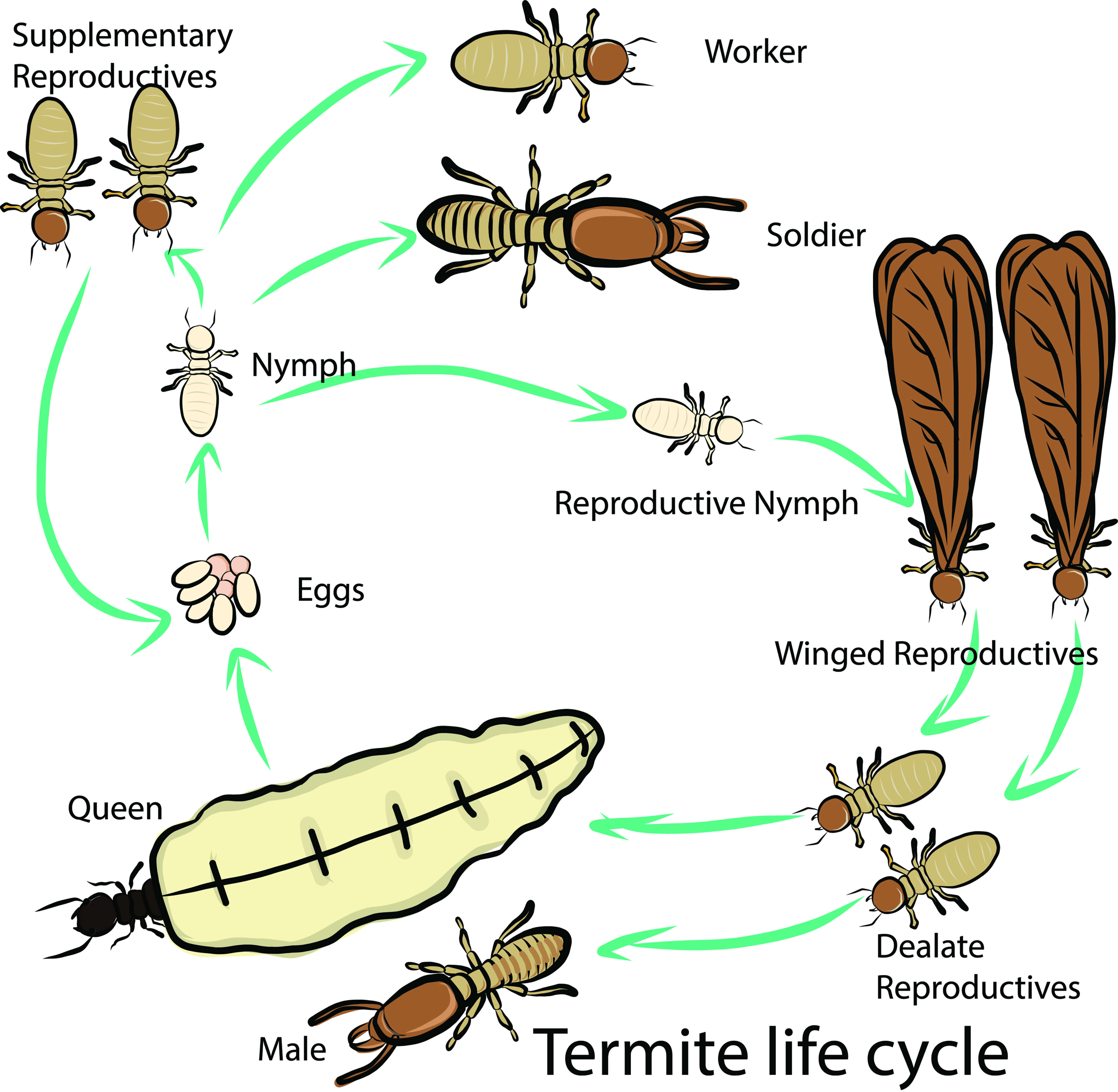SCHDULE AN INSPECTION
Sorry, we do not recognize this zip code. Please contact us directly at 214-429-4317 or send us a message now.
Termites are among the most hostile pests. According to studies, termites cause $5 billion worth of damages annually. These pests feed on cellulose in paper and wood products. This is the reason termites are capable of destroying your home from the inside out. To keep termites away from your home and avoid incurring damages, you need to educate yourself about these pests.





Termites have a head, antenna, abdomen, and thorax. The size and coloration of termites will vary depending on the type of termite. Termites can be distinguished as reproductive, soldiers, and workers. Worker termites deal with collecting food and are white in color. These termites are between ¼ to ½ an inch in length.
Soldier termites deal with protecting the colony from threats and have white bodies. Soldier termites have dark-colored heads and come in sizes of 2/3 to ¾ an inch. Reproductive termites are charged with procreation and can be either light brown or black. These termites come in sizes of ¼ to ½ inches. Reproductive termites are confused with flying ants because they are the only ants with wings. The wings allow the new reproductive termites to migrate away from their place of birth and form colonies elsewhere. These wings are normally shed after they find a suitable home. This is why discarded wings are one of the signs of termite infestation. Termites can be further distinguished depending on their diet. Dry wood termites feed on dry wood and are pale brown and 3/8 inches in size.
Damp wood termites feed on dying wood and are dark brown and 5/8 inches in size. Subterranean termites feed on anything, including wood, and can cause the greatest damage to your home. They are dark brown and are 1/8 to 1 inch in size. Formosans are a variation of subterranean termites and are considered the most voracious among all types of termites. A colony of Formosans is difficult to destroy because of its great size and territorial invasion. These pests have yellowish-brown marks and are 1 inch long. Formosans are mainly seen during tropical climates.
Termites form colonies of up to hundreds of thousands dependant on the termite and the prevailing conditions. Termites mainly thrive in damp, subterranean, and dry environments. Drywood termites can be found in new furniture, firewood, or nearby trees. Dampwood termites can be found at the ground levels. They enter the house through water drainage chutes or dog doors. Subterranean termites have colonies in the yard, under a tree stump, and usually require soil to operate. These termites build underground tunnels next to their food source like the house’s foundation.
There are several signs that will warn you of a termite infestation. The signs of infestation will depend on the type of termite present. The common tell-tale signs include:
There are several options for dealing with a termite infestation. The main options are:
Baiting involves disseminating lethal poison to termites. The poison slowly spreads to the entire colony. Chemical barriers are sprays that act as deterrents or exterminators, while physical barriers involve covering soil spaces in a vulnerable layer like plastic. If all of these measures fail, you can try fumigation, also called termite tenting. This treatment will resolve the infestation instantly. It involves erecting a tent in-home and spraying every nook and cranny with some form of termite destruction gas. This process and the resulting aeration requires at least 30 hours. It is advisable to stay away from the fumigated area for at least 3 days.
There are simple approaches you can use to secure your home from termite infestations. Some of the effective methods include:
What Can Pest Services Do For You?
When you contract a pest control service to deal with your termite problem, you can expect the following services:
Inspection – the professionals will inspect your home for current termite active, the damages caused, and any conditions that may promote future infestation.
Solution- the professionals will determine which solution to use to resolve your termite problem. They may use bait, chemical or physical barriers, or fumigation.
Monitoring- after applying a solution, the professionals will continue monitoring your home for increased or new termite activity.
Maintenance- the professionals will follow up on the solution implemented to determine whether it is effective in resolving the infestation or whether to use an alternative approach.

Termites can present great damage to your home if they are left unattended. These insects mainly target wooden structures and furniture but can also destroy plastic and other materials. Identifying termites by their color, size, and signs of an infestation is one way of dealing with them before they cause serious damage. There are also preventative measures you can take to ensure your home is never infested by termites. If you are unable to deal with a termite infestation on your own, it is advisable to call in an expert in termite exterminator to resolve the problem.
SafeHaven Pest Control
2609 National Cir Garland, TX 75041
Serving the North Texas Area: Dallas, Forney, Cleburne
© 2019 SafeHaven Pest Control. All rights reserved.Privacy Policy